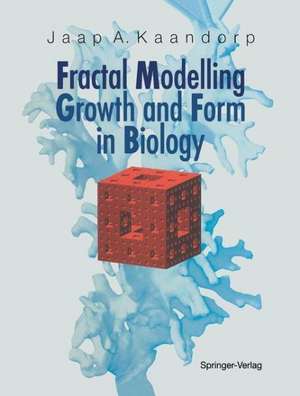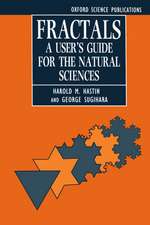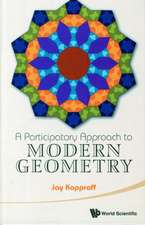Fractal Modelling: Growth and Form in Biology
Autor Jaap A. Kaandorp Cuvânt înainte de P. Prusinkiewiczen Limba Engleză Paperback – 4 oct 2012
| Toate formatele și edițiile | Preț | Express |
|---|---|---|
| Paperback (1) | 700.61 lei 43-57 zile | |
| Springer Berlin, Heidelberg – 4 oct 2012 | 700.61 lei 43-57 zile | |
| Hardback (1) | 583.37 lei 38-44 zile | |
| Springer Berlin, Heidelberg – 12 apr 1994 | 583.37 lei 38-44 zile |
Preț: 700.61 lei
Preț vechi: 824.25 lei
-15% Nou
Puncte Express: 1051
Preț estimativ în valută:
134.06€ • 140.35$ • 110.93£
134.06€ • 140.35$ • 110.93£
Carte tipărită la comandă
Livrare economică 07-21 aprilie
Preluare comenzi: 021 569.72.76
Specificații
ISBN-13: 9783642634024
ISBN-10: 3642634028
Pagini: 228
Ilustrații: XIII, 209 p.
Dimensiuni: 210 x 277 x 12 mm
Greutate: 0.52 kg
Ediția:Softcover reprint of the original 1st ed. 1994
Editura: Springer Berlin, Heidelberg
Colecția Springer
Locul publicării:Berlin, Heidelberg, Germany
ISBN-10: 3642634028
Pagini: 228
Ilustrații: XIII, 209 p.
Dimensiuni: 210 x 277 x 12 mm
Greutate: 0.52 kg
Ediția:Softcover reprint of the original 1st ed. 1994
Editura: Springer Berlin, Heidelberg
Colecția Springer
Locul publicării:Berlin, Heidelberg, Germany
Public țintă
Professional/practitionerCuprins
1 Introduction.- 1.1 Structure of the Book.- 2 Methods for Modelling Biological Objects.- 2.1 Reaction Diffusion Mechanisms.- 2.2 Iteration Processes and Fractals.- 2.3 Generation of Objects Using Formal Languages.- 2.4 Diffusion Limited Aggregation Models.- 2.5 Generation of Fractal Objects Using Iterated Function Systems.- 2.6 Iterative Geometric Constructions.- 2.7 A Review of the Methods.- 3 2D Models of Growth Forms.- 3.1 Modular Growth.- 3.2 Radiate Accretive Growth.- 3.3 Growth Forms of Modular Organisms and the Physical Environment.- 3.4 Description of the Internal Architecture of the Autotrophic Example: Montastrea annularis.- 3.5 Description of the Internal Architecture of the Heterotrophic Example: Haliclona oculata.- 3.6 An Iterative Geometric Construction Simulating the Radiate Accretive Growth Process of a Branching Organism.- 3.7 A Model of the Physical Environment.- 3.8 Conclusions and Restrictions of the 2D Model.- 3.9 List of Symbols Used in this Chapter.- 4 A Comparison of Forms.- 4.1 A Comparison of a Range of Forms.- 4.2 An Experimental Verification of the Model.- 4.3 Conclusions.- 5 3D Models of Growth Forms.- 5.1 Constructions in Space, a 3D Modelling System for Iterative Constructions.- 5.2 Description of an Organism with Radiate Accretive Growth and a Triangular Tessellation of the Surface.- 5.3 Representation of a Triangular Tessellation.- 5.4 Representation of a Multi-Layer Triangular Tessellation.- 5.5 The Lattice Representation of a Volume Tessellated with Triangles.- 5.6 An Iterative Geometric Construction Simulating the Radiate Accretive Growth Process of a Branching Organism.- 5.7 Conclusions and Restrictions of the Presented 3D Models.- 5.8 List of Symbols Used in Sects. 5.3 to 5.7.- 6 Final Conclusions.- 6.1 The 2D and 3D Simulation Models.- 6.2 Application of the Simulation Models in Ecology.- References.













